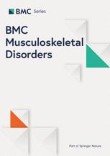
Abstract
Background
Surgical site infections (SSI) after distal radius fracture (DRF) surgery have not previously been studied as the primary outcome in a large population with comparative data for different surgical methods. The aims of this study were 1) to compare SSI rates between plate fixation, percutaneous pinning and external fixation, and 2) to study factors associated with SSI.
Methods
We performed a nation-wide cohort study linking data from the Swedish national patient register (NPR) with the Swedish prescribed drug register (SPDR). We included all patients ≥18 years with a registration of a surgically treated DRF in the NPR between 2006 and 2013. The primary outcome was a registration in the SPDR of a dispensed prescription of peroral Flucloxacillin and/or Clindamycin within the first 8 weeks following surgery, which was used as a proxy for an SSI. The SSI rates for the three main surgical methods were calculated. Logistic regression was used to study the association between surgical method and the primary outcome, adjusted for potential confounders including age, sex, fracture type (closed/open), and a dispensed prescription of Flucloxacillin and/or Clindamycin 0–8 weeks prior to DRF surgery. A classification tree analysis was performed to study which factors were associated with SSI.
Results
A total of 31,807 patients with a surgically treated DRF were included. The proportion of patients with an SSI was 5% (n = 1110/21,348) among patients treated with plate fixation, 12% (n = 754/6198) among patients treated with percutaneous pinning, and 28% (n = 1180/4261) among patients treated with external fixation. After adjustment for potential confounders, the surgical method most strongly associated with SSI was external fixation (aOR 6.9 (95% CI 6.2–7.5, p < 0.001)), followed by percutaneous pinning (aOR 2.7 (95% CI 2.4–3.0, p < 0.001)) (reference: plate fixation). The classification tree analysis showed that surgical method, fracture type (closed/open), age and sex were factors associated with SSI.
Conclusions
The SSI rate was highest after external fixation and lowest after plate fixation. The results may be useful for estimation of SSI burdens after DRF surgery on a population basis. For the physician, they may be useful for estimating the likelihood of SSI in individual patients.







